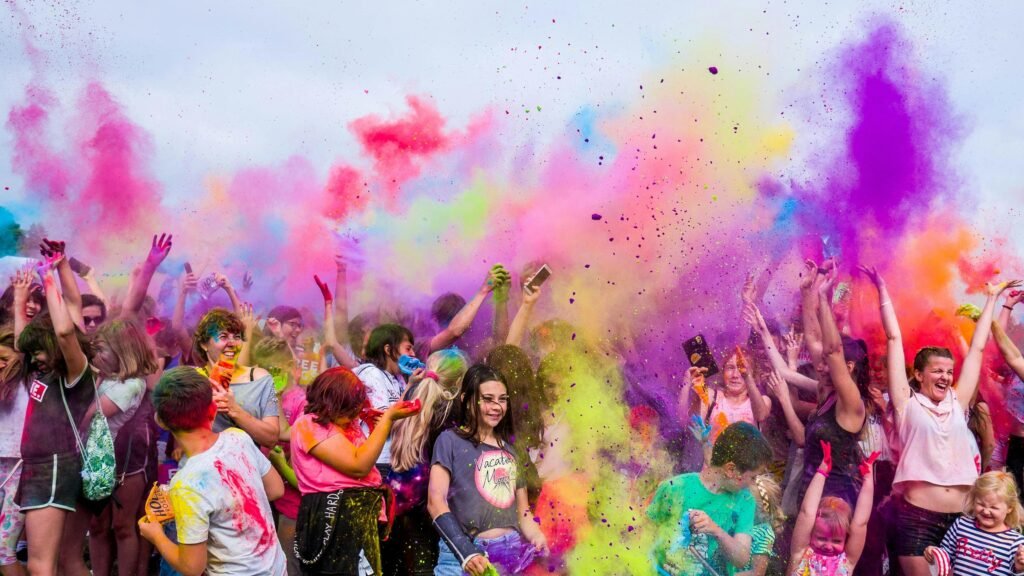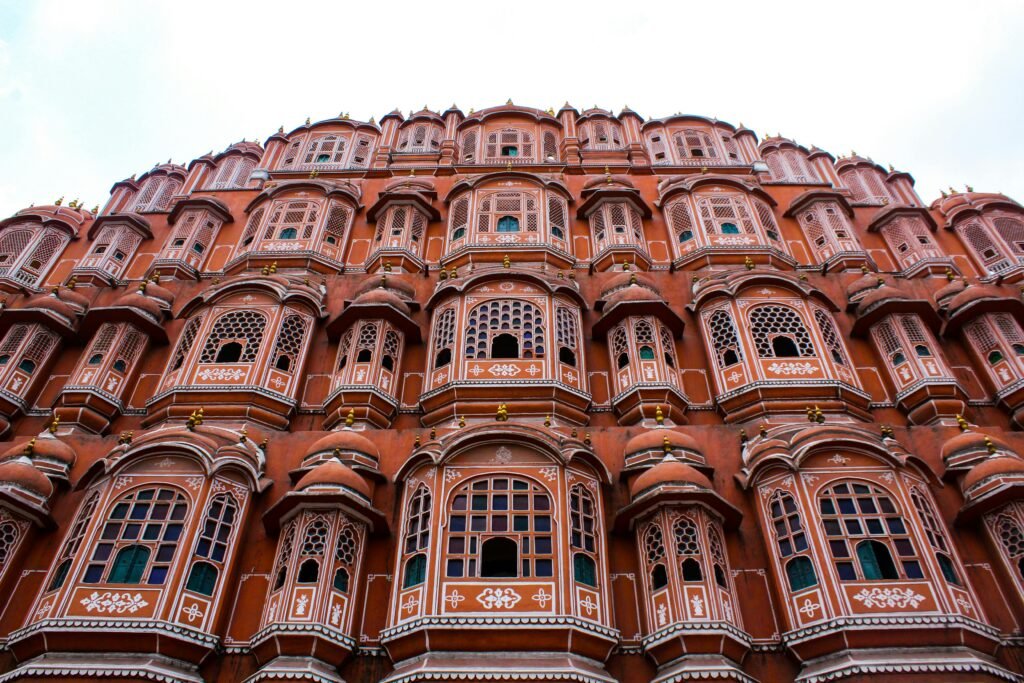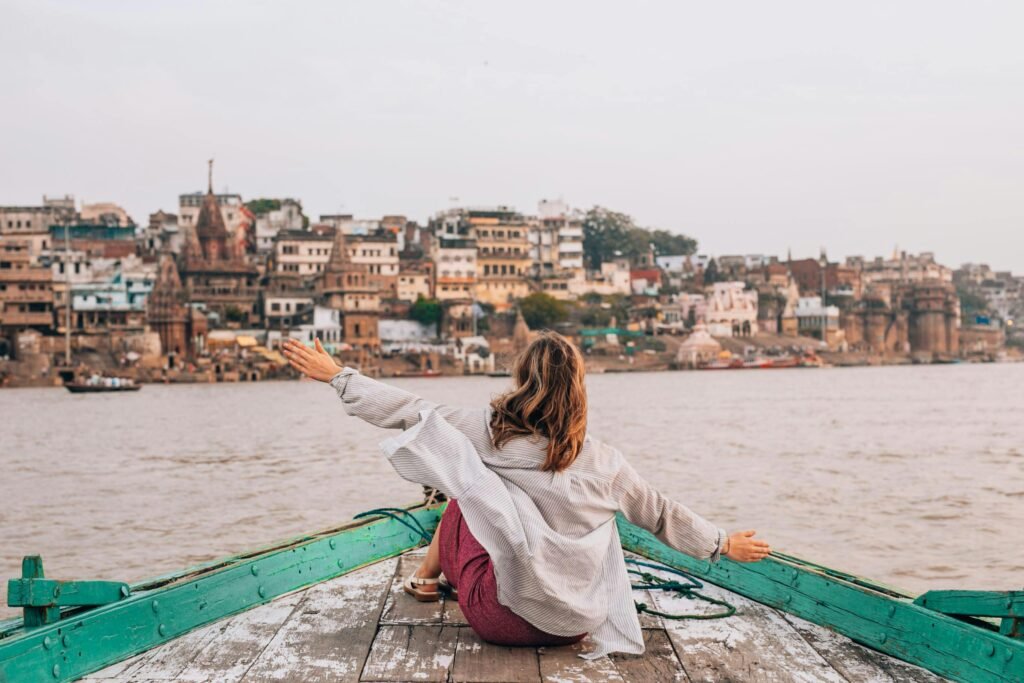Introduction to India’s Rich Travel Landscape
India, a land of myriad cultures and traditions, stands as a premier travel destination that offers an unparalleled tapestry of experiences for wanderers. With its deep-rooted history and diverse ethnicities, the nation is not merely a geographical entity, but a melting pot of rich narratives that span thousands of years. Each region possesses its unique identity, heavily influenced by historical events, indigenous customs, and vibrant festivals that form an integral part of the Indian lifestyle.

The cultural diversity of India is reflected in its languages, cuisines, and traditional practices, making it an eye-opening experience for travelers seeking substance in their journeys. With 28 states and 8 union territories, each area reveals a distinct character and flavor, inviting exploration from the pristine beaches of Goa to the snow-clad peaks of Himachal Pradesh. The anthropological richness further extends to the nation’s architecture, where ancient temples, majestic forts, and contemporary buildings coexist harmoniously, drawing history enthusiasts and art aficionados alike.
Festivals in India serve as focal points that encapsulate the essence of its diverse culture. These celebrations, ranging from Diwali’s luminescent lights to Holi’s vibrant colors, are not just events but reflections of shared values and communal joy. They provide a unique opportunity for travelers to engage with locals, participate in ceremonies, and witness customs that span centuries. During these festivities, the atmosphere transforms, offering a sensory overload of sights, sounds, and tastes, thereby creating memorable experiences that resonate beyond the duration of travel.
In guiding future explorations, understanding the rich travel landscape of India is essential for an enriching visit that transcends mere sightseeing, allowing one to immerse fully in the inspirational spirit of this remarkable nation.
The Enchantment of Diwali – The Festival of Lights
Diwali, known as the Festival of Lights, is one of the most significant and widely celebrated festivals in India. Spanning five days, it typically occurs between October and November, marking the triumph of light over darkness and good over evil. This festival is deeply rooted in various cultural traditions and religious beliefs, particularly in Hinduism, where it commemorates the return of Lord Rama to Ayodhya after his victory over the demon king Ravana. Throughout India, Diwali is a time for families to come together, exchange gifts, and partake in rituals that honor the divine.

The vibrant celebrations during Diwali transform cities across India into a breathtaking spectacle of lights and colors. Homes are adorned with intricately designed rangoli, made from colorful powders or flower petals, while oil lamps, known as diyas, illuminate every corner. Streets come alive with strings of electric lights and the echoes of joyful laughter. Major urban centers like Delhi, Mumbai, and Jaipur witness grand fireworks displays that light up the night sky. The atmosphere is bustling with excitement, as markets brim with festive goods, sweets, and decorations, captivating both locals and visitors alike.
Traditional practices during Diwali include worship rituals, known as puja, where devotees pay homage to deities like Goddess Lakshmi, the harbinger of wealth and prosperity. Additionally, the festival encourages philanthropy, as many people take this opportunity to donate to charitable causes. Foods also play a crucial role during Diwali, with families preparing a wide array of sweets and savory dishes, which are shared with neighbors to foster a sense of community and togetherness.
Traveling to India during Diwali offers an unparalleled experience, as the festive fervor coupled with the distinct cultural attributes of the regions fosters a unique ambiance. It provides visitors an opportunity to witness and participate in a vibrant celebration, enriching their understanding of India’s diverse heritage. The enchanting spirit of Diwali resonates far beyond just a day of festivities, symbolizing unity, hope, and the joyous nature of life itself.
Holi – The Festival of Colors: A Kaleidoscope of Joy
The festival of Holi, celebrated predominantly in India, marks the arrival of spring and signifies the triumph of good over evil. As one of the most vibrant and exuberant festivals in the country, Holi is characterized by an explosion of colors, joyous gatherings, and a deeply rooted sense of community. Taking place annually, typically in March, the festival invites people from all walks of life to participate in its lively revelry, nurturing bonds among families and friends.
Across India, Holi is celebrated in various forms, each region adding its unique flavor to the festivities. In the northern states, for instance, the celebration is often marked by playful water fights and the throwing of colored powders known as ‘gulal.’ Cities like Mathura and Vrindavan are particularly famous for their participatory celebrations, where traditions date back to the times of Lord Krishna. In contrast, the southern states showcase their own interpretations, often incorporating local customs and cultural practices. This diversity in celebration highlights Holi’s power to unify people regardless of their backgrounds.
Travelers seeking a vivid travel experience will find Holi to be an unparalleled adventure. Many towns and villages invite visitors to join in the merriment, creating an atmosphere of camaraderie and joy. The colorful festivities often feature music, dance, and traditional sweets, immersing participants in the rich cultural tapestry of India. Engaging in these activities not only enhances one’s travel experience but also fosters cross-cultural connections that resonate long after the colors have faded. This vibrant celebration serves as a reminder of the richness of human connections, making it an essential experience for anyone exploring the diverse destinations of India.

Experiencing the Regal Charm of Jaipur
Jaipur, famously known as the Pink City, is a vibrant destination that encapsulates the royal heritage and cultural wealth of India. As the capital city of Rajasthan, it is adorned with impressive palaces, majestic forts, and an array of historical landmarks that attract travelers from all corners of the globe. The city’s distinctive pink-hued buildings give it an enchanting aura, making it a must-visit during festive seasons.
One of Jaipur’s most iconic attractions is the Amer Fort, which stands atop a hill overlooking the picturesque Maota Lake. This stunning fort is a blend of Hindu and Mughal architecture and offers visitors a glimpse into the opulent lifestyles of the erstwhile Rajput rulers. The intricate mirror work, lush gardens, and cascading fountains speak volumes of the craftsmanship that flourished during the fort’s inception. A trip to Amer Fort during festivities is particularly magical, as traditional music and dance performances often enliven the atmosphere.
Another gem is the City Palace, which serves as a stunning representation of Rajasthan’s royal legacy. It houses a museum that showcases an exquisite collection of armor, textiles, and ancient manuscripts, providing a comprehensive insight into the regal past of Jaipur. The courtyard and gardens of the palace, especially during events and fairs, create a lively scene filled with cultural events that engage both locals and tourists alike.

In addition to its grand architecture, Jaipur is famous for its vibrant festivals such as Diwali, Teej, and the Jaipur Literature Festival. These celebrations are marked by colorful processions, traditional music, and dance, creating an unforgettable experience. As visitors immerse themselves in these festivities, they can savor the rich local cuisine, shop for handcrafted souvenirs, and witness the heartfelt hospitality of the Rajasthani people, all contributing to the regal charm that defines Jaipur.
Exploring the Tranquility of Varanasi
Varanasi, often referred to as the spiritual heart of India, is a city that embodies the essence of devotion and cultural richness. Located on the banks of the sacred Ganges River, Varanasi is renowned for its ghats—stepped embankments leading to the river—that serve as vital ceremonial locations for religious rituals and festivals. Each ghat possesses its own unique character and history, offering visitors a glimpse into the deep spiritual practices that define the city.
One of the most magnificent festivals celebrated in Varanasi is the Ganga Mahotsav, which occurs annually, drawing both devotees and tourists alike. This vibrant celebration honors the Ganges River, showcasing traditional music, dance, and various cultural performances that illuminate the strong connection between the people and their river. During Ganga Mahotsav, the ghats are adorned with beautiful decorations, and the atmosphere is charged with joy and reverence, making it an ideal time to experience the city’s rich cultural tapestry.
Visitors to Varanasi during festival times can witness the breathtaking sight of the Ganges at dawn, where the soft hues of the sunrise reflect on the water’s surface. The ghats come alive with pilgrims performing rituals such as ablutions and offerings, creating a tranquil yet vibrant ambience. This unique combination of spirituality and lively celebrations allows travelers to engage in deep cultural immersion, providing an opportunity for introspection and reflection away from the hustle and bustle of modern life.
As one strolls through the narrow lanes of Varanasi, the spiritual atmosphere is palpable, with temples, shrines, and the scent of incense filling the air. Engaging with local sages and artisans adds layers to the overall experience, making Varanasi not just a travel destination but a journey into the profound connections between faith, art, and community. Visitors will undoubtedly leave with a sense of the tranquility that characterizes this ancient city, making it a must-visit place in any travel itinerary focused on the spirituality and cultural heritage of India.

The Tropical Paradise of Goa’s Festivals
Goa, renowned for its stunning beaches and vibrant culture, stands as a premier travel destination that harmoniously blends the allure of relaxation with the excitement of lively festivities. One of the most significant events in Goa’s festival calendar is the Carnival, a celebration that captivates both locals and travelers alike with its spectacular display of color, music, and joyous revelry.
The Carnival typically takes place in February, just before the lent season, and spans over three days filled with parades, music, and socio-cultural festivities. The streets of Goa come alive with vibrant processions that feature ornate floats representing different themes, accompanied by exuberant performances from dancers and musicians. These parades showcase the rich cultural heritage of the region, as they blend traditional Goan music with contemporary beats, creating an infectious atmosphere that invites participation from all attendees.
Travelers visiting during this festive period can also indulge in a variety of local delicacies offered at street stalls lining the event routes. The culinary offerings range from spicy Goan fish curry to sweet, mouth-watering desserts, providing an authentic taste of Goa’s gastronomy. Nighttime festivities include live music concerts and dance parties, enabling visitors to immerse themselves in the exuberant spirit of the Carnival.
Moreover, the unique blend of Portuguese influences in Goa’s festivities reflects the rich historical tapestry of the state, offering a compelling glimpse into its diverse traditions and customs. Through iconic performances, traditional dance forms, and localized art, each Carnival is a reminder of the multicultural essence that defines this tropical paradise.
In conclusion, Goa offers a fascinating getaway for those seeking both serene beach experiences and the thrill of vibrant festivals. The Carnival, with its colorful parades and dynamic atmosphere, plays a pivotal role in showcasing why Goa remains an unparalleled destination in India for travelers seeking a mix of relaxation and culture.
The Mystique of Kerala: A Celebration of Onam
Kerala, often referred to as “God’s Own Country,” transforms into a vibrant tableau during the festival of Onam, which usually falls in August or September. This ten-day festival marks the homecoming of the mythical King Mahabali and showcases the state’s rich cultural heritage, lush landscapes, and community spirit. Visitors to Kerala during this festive time can experience a unique blend of tradition and natural beauty, making it an ideal time for immersive travel.
The centerpiece of Onam celebrations is the Onam Sadhya, a grand feast served on a banana leaf, featuring an array of vegetarian delicacies. The Sadhya typically includes rice, sambar, aviyal, thoran, and various other traditional dishes, culminating in a sweet treat called payasam. This feast not only serves to nourish the body but also symbolizes abundance and togetherness, as families and friends gather to share this culinary experience. For travelers seeking to indulge in authentic local experiences, participating in a Sadhya is a must.
In addition to the gastronomical delights, Onam is characterized by a plethora of cultural events that reflect Kerala’s heritage. One of the most thrilling spectacles is the Nehru Trophy Boat Race, held on the Punnamada Lake, attracting paddle enthusiasts and spectators from all over the world. The vibrant colors of the racing boats and the rhythmic chants of the rowers create an exhilarating atmosphere, epitomizing the festive spirit of the region.
Moreover, traditional performances such as Kathakali, Mohiniyattam, and traditional folk dances occur throughout Kerala, offering travelers deep insights into the rich artistic expressions of the area. As various communities come together to celebrate Onam, the sense of unity and shared joy permeates the air, inviting visitors to witness this unparalleled cultural tapestry that makes Kerala truly enchanting during this time.
Practical Travel Tips for Festival Seasons in India
Traveling to India during festival seasons can be an exhilarating experience, provided one is well-prepared. The best time to visit varies according to the festival, but generally, the months from September to March witness a plethora of cultural events. Major festivals such as Diwali, Holi, and Durga Puja are celebrated in these months and offer an opportunity to immerse oneself in vibrant traditions. However, it is advisable to book flights and accommodations well in advance, as these periods attract an influx of tourists and locals alike.
Cultural etiquette is crucial when navigating around Indian festivals. Understanding local customs can significantly enhance your experience. For instance, dressing modestly is appreciated, especially when attending religious ceremonies. It is also considered respectful to seek permission before taking photographs of individuals or sacred places. Guests often find that participating in local traditions—such as applying ’tilak’ during Diwali or engaging in communal ‘bhangra’ during Baisakhi—deepens their connections with local communities.
Travel arrangements can vary based on the region. Major cities like Delhi, Mumbai, and Kolkata offer robust public transportation systems, but travelers may encounter heavy traffic during festivals. Booking a reliable taxi service or using local ride-hailing apps can alleviate the stress of navigating crowded streets. Moreover, consider traveling between cities via trains for a more authentic experience, as trains often operate on festive schedules, making them an enjoyable alternative.
Lastly, selecting appropriate accommodations enhances one’s journey. Opt for hotels or guesthouses that offer cultural experiences, such as festival-themed meals or guided tours. Many establishments provide unique insights into local customs, which can be invaluable when engaging with the rich tapestry of festivals in India. By employing these practical travel tips, visitors can ensure a memorable and culturally enriching experience while exploring India’s festive spirit.
Conclusion: Embracing the Spirit of India Through Travel and Festivity
India, renowned for its rich cultural heritage and diverse landscapes, offers travelers a unique opportunity to immerse themselves in its vibrant festivities. Each festival not only marks a significant occasion but also reflects the country’s deeply rooted traditions and values. From Diwali, the festival of lights, which symbolizes the triumph of good over evil, to Holi, the exuberant celebration of colors, there is no shortage of occasions that showcase the joyous spirit of the Indian people. Participating in such festivals provides a profound understanding of India’s ethos, fostering connections with locals and enhancing one’s travel experience.
Moreover, the warmth and hospitality of the Indian culture are most palpable during these celebrations. Visitors can engage in various activities, such as traditional dance, music, and culinary experiences, which invite them to be part of the living tapestry of Indian life. The incredible diversity found in regional festivities—ranging from the vibrant parades of Ganesh Chaturthi in Maharashtra to the mesmerizing rituals of Durga Puja in West Bengal—offers travelers the chance to observe and partake in different cultural practices. Each event, infused with local flavors and customs, deepens the appreciation of India’s multifaceted identity.
Embracing the spirit of India through its festivals contributes to a more enriching travel narrative. As travelers venture beyond the well-trodden tourist paths, they uncover the profound connections fostered through communal celebrations. Such experiences are not just an exploration of sights; they are journeys into the heart of India, revealing the warmth of its people and the richness of its traditions. To truly appreciate the essence of this incredible country, one must participate in its festivals, celebrating alongside the locals and weaving their own stories into the colorful fabric of India.



